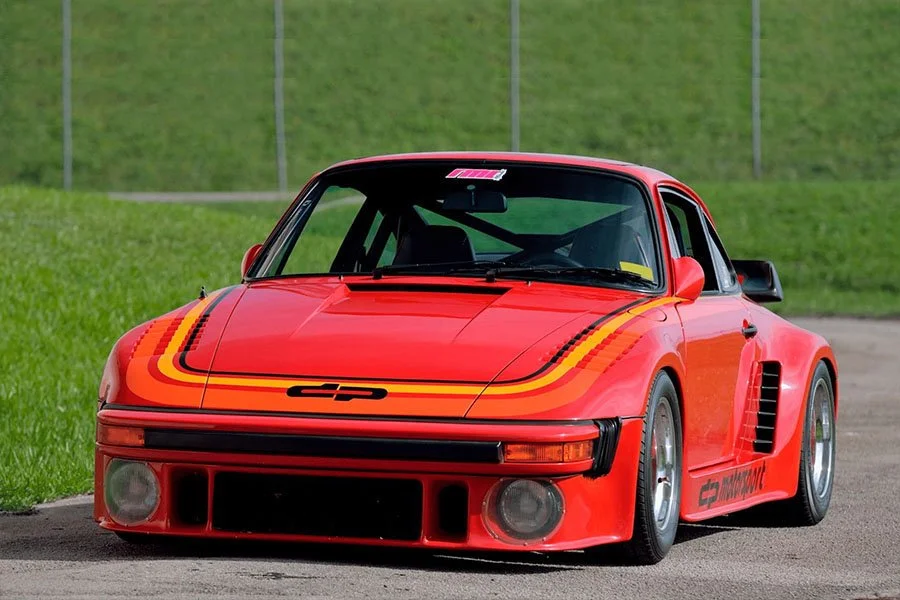Guide: Porsche 968 Turbo S - a Historical & Technical Appraisal
/BACKGROUND
As turbocharged versions of both the 924 and 944 had been produced, it seemed likely that Porsche would launch a forced induction 968.
However, neither the turbocharged 924 or 944 had been a huge commercial success and, as 968 sales were massively below expectations, a series production 968 Turbo wasn’t deemed commercially viable.
For comparison, on average nearly 17,000 944s were built every year between 1981 and 1991 whereas the 968 managed less than 13,000 in its entire four year production run. There was nothing fundamentally wrong with the new model, but an ageing platform, high price and global recession hit sales hard.
Although a series production Turbo was out of the question, ironically, it was the economic downturn that played a big part in Porsche’s decision to offer a turbocharged 968 through their Customer Sport Department in Weissach.
Group C machinery had dominated sports car racing since 1982, but when the FIA tried to introduce a 3.5-litre normally aspirated engine limit from 1989, costs began to rise exponentially.
With Group C cars no longer eligible from 1992 and most major economies in free fall, the World Sportscar Championship struggled for support. The 1993 season was cancelled altogether.
What happened next was the re-emergence of amateur GT racing: privateer teams running competition-prepared versions of genuine production cars.
With manufacturers reluctant to spend big on racing programmes, homologation requirements were dramatically eased; so long as one road-going version of a car had been made, racing versions were permitted to compete.
The four new classes for 1993 comprised GT1 through GT4.
Porsche initially offered its customers two new GT3 class models: the 964-based 911 3.8 Carrera RSR and the 968 Turbo RS.
To homologate the Turbo RS, Porsche introduced the 968 Turbo S during early 1993.
CHASSIS
Like all 968s, the Turbo S featured a pressed steel unitary bodyshell derived from the 944 S2.
Fully independent suspension was via MacPherson struts with alloy lower control arms at the front and semi trailing arms with torsion bars at the rear.
Porsche installed the 968’s optional Sport Chassis pack as standard. This comprised stiffer springs and externally adjustable shocks, adjustable spring plates and stabilisers plus reinforced suspension bushes. Ride height was 20mm lower than the standard 968.
Power steering and ABS were retained as was the regular 74-litre fuel tank underneath the boot floor.
Brakes and wheels were sourced from the 3.6-litre 911 Turbo S.
Red-painted four-piston alloy brake calipers were installed along with cross-drilled and ventilated discs that measured 322mm at the front and 299mm at the rear.
The 18-inch three-piece Speedline Cup Design wheels were 8-inches wide at the front, 10-inches wide at the rear and originally came shod with Dunlop Sport 8000 tyres.
ENGINE / TRANSMISSION
To integrate a single KKK K27 turbo, Porsche had to ditch the VarioCam system found on normally aspirated 968s. As a result, the 968 Turbo S came with the old eight-valve head used by the 944 Turbo.
Like the forced induction 944, compression was 8.0:1 compared to 11.0:1 for regular 968s.
Thanks to a bore and stroke of 104mm and 88mm, the Type M44/60 engine found in the 968 Turbo S displaced an identical 2990cc to Porsche’s other three-litre inline four cylinder engines.
Another all-alloy, water-cooled unit with a single overhead camshaft, it featured Bosch DME sequential multi-point fuel-injection, a new Lambda sensor and three-way catalytic converter.
The water-cooled turbo had a bypass valve and separate wastegate. Boost pressure was set at 1.0 bar.
In this configuration, peak output was 305bhp at 5400rpm and 369lb-ft at 3000rpm.
The 968’s original six-speed gearbox was reinforced, fitted with longer ratios on fourth and fifth and given a new type number: G44/01.
Transmission was via a beefier Sachs clutch and Torsen limited-slip differential with 75% locking factor.
BODYWORK
Cosmetically, the 968 Turbo S came with a number of special features.
At the front, Porsche added a body coloured chin spoiler, an enlarged central intake above the license plate and two NACA ducts on the bonnet.
A bigger rear spoiler included a central element that could be adjusted through a range of 10°. It was mounted on a new body coloured rear windscreen shroud.
To save weight, underseal was omitted from the bodyshell.
The 968 Turbo S was built in six different colours: Speed Yellow, Grand Prix White, Midnight Blue, Silver, Blood Orange and Guards Red.
INTERIOR
Inside, Porsche equipped each car with Club Sport trim and as a result, most of the stock 968’s luxury equipment was deleted.
The electric windows were ditched in favour of manual winders. The standard seats were switched to lightweight Recaro buckets with body-coloured backs.
Other equipment to be discarded included the electric mirrors, sound insulation, central locking, automatic heater control, stereo, alarm and rear seats.
The four-spoke airbag steering wheel was replaced with a basic small-diameter three-spoke rim.
Other special equipment included a smaller battery and lightweight wiring loom.
Thinner carpet was used instead of deep pile upholstery. The standard 968 door cards were replaced with simplified panels from the 944 S2.
Only one interior upholstery colour was offered: black.
WEIGHT / PERFORMANCE
At 1300kg, the Turbo S was 20kg lighter than the Club Sport and 70kg lighter than a standard 968 Coupe.
Porsche quoted a top speed of 175mph and 0-62mph time of 4.9 seconds.
PRODUCTION
Given that its 175,000DM price was roughly four times the cost of a new Club Sport, demand was unsurprisingly limited.
The fact the Turbo S was not type approved for sale in the USA further restricted its commercial potential.
In total, 14 examples were built between early 1993 and spring 1994.
Porsche built ten cars in 1993 and four in 1994, all of which were left-hand drive.
Text copyright: Supercar Nostalgia
Photo copyright: Porsche - https://www.porsche.com

































